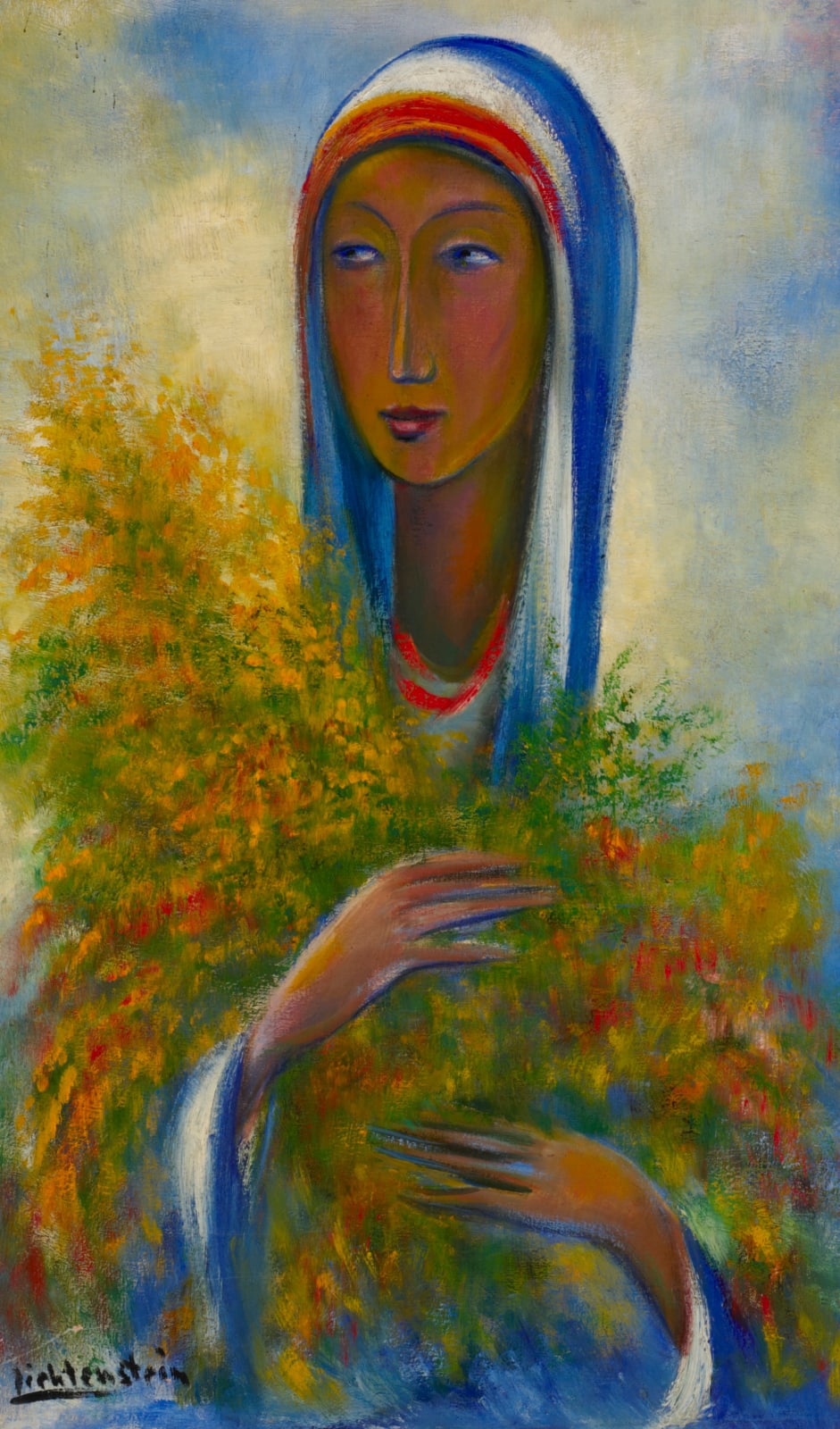Isaac Lichtenstein 1888-1981
Head of a Yemenite Woman, Ruth II, 1921
oil on canvas
94 x 56.5 cm
signed (lower left) 'Lichtenstein'
1987-222
© Isaac Lichtenstein estate
Photo: Ben Uri Gallery and Museum
This painting depicts a scene from The Book of Ruth in the bible. This relates that Ruth and Orpah, two women of Moab, had married the two sons of Elimelech...
This painting depicts a scene from The Book of Ruth in the bible. This relates that Ruth and Orpah, two women of Moab, had married the two sons of Elimelech and Naomi, Judeans who had settled in Moab to escape a famine in Judah. After the death of Elimelech, and then the husbands of both younger women, Naomi plans to return to her native Bethlehem and urges her daughters-in-law to return to their families and re-marry. Orpah reluctantly departs but Ruth begs to stay with Naomi and share her fate. They travel to Bethlehem and Ruth looks after Naomi by collecting the gleanings of the field belonging to a wealthy landowner named Boaz, whom she eventually marries, becoming great-grandmother to King David. Lichtenstein depicts Ruth gathering sheaves of wheat and barley in the field.
Provenance
purchased 1925Literature
Walter Schwabe and Julia Weiner, eds., Jewish Artists: the Ben Uri Collection - Paintings, Drawings, Prints and Sculpture (London: Ben Uri Art Society in association with Lund Humphries Publishers Ltd, 1994), p. 69.Be the first to know – Sign Up
Subscribe to our newsletter and be the first to know about everything new at Ben Uri, including the constantly evolving and expansive online content across our exhibitions, collection and research.
We value and respect your privacy. Your personal data will be kept private and processed securely, according to our Privacy Policy. If you change your mind anytime, you can unsubscribe directly when receiving a mail from us (the link will be at the bottom of the email) or contact us.
* denotes required fields
This website uses cookies to improve your experience. If you are not happy with this, you can opt-out below.


